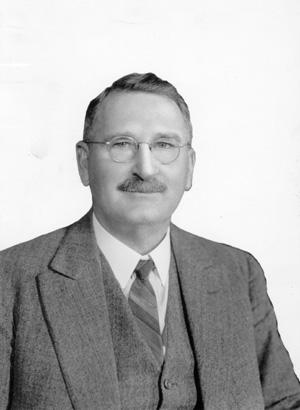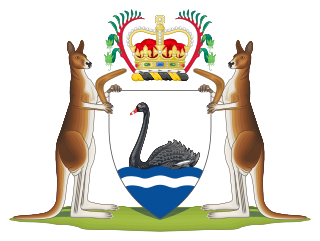
John Scaddan, CMG, popularly known as "Happy Jack", was Premier of Western Australia from 7 October 1911 until 27 July 1916.
The Daglish Ministry was the 7th Ministry of the Government of Western Australia and was led by Labor Premier Henry Daglish. It succeeded the James Ministry on 10 August 1904 after the 1904 election boosted Labor's seat count from 8 to 22 in the 50-seat Legislative Assembly. As such it was a minority government and relied on the support of four independents.

Philip Collier was an Australian politician who served as the 14th Premier of Western Australia from 1924 to 1930 and from 1933 to 1936. He was leader of the Labor Party from 1917 to 1936, and is Western Australia's longest-serving premier from that party.

John Collings Willcock was the 15th Premier of Western Australia, serving from 1936 until 1945. He was a member of the Australian Labor Party.
This is a list of members of the Western Australian Legislative Council from 22 May 1922 to 21 May 1924. The chamber had 30 seats made up of ten provinces each electing three members, on a system of rotation whereby one-third of the members would retire at each biennial election. During the term, the Country Party split into rival Ministerial (MCP) and Executive (ECP) factions–although in the Council, this was diluted somewhat by the refusal of some long-standing Country members to become involved in the dispute. The Executive faction, loyal to the Primary Producers' Association, prevailed and by 1925 the Ministerial faction had merged with the Nationalist Party.
This is a list of members of the Western Australian Legislative Council from 22 May 1928 to 21 May 1930. The chamber had 30 seats made up of ten provinces each electing three members, on a system of rotation whereby one-third of the members would retire at each biennial election.
The Rason Ministry was the 8th Ministry of the Government of Western Australia and was led by Ministerialist Premier Hector Rason. It succeeded the Daglish Ministry on 25 August 1905 after the previous Labor minority administration fell on a vote of no confidence. On 7 May 1906, it was followed by the Moore Ministry led by Minister for Lands Newton Moore.
The Scaddan Ministry was the 11th Ministry of the Government of Western Australia and was led by Labor Premier John Scaddan. It succeeded the First Wilson Ministry led by Ministerialist Frank Wilson on 7 October 1911 after the decisive result of the state election held four days earlier, which had produced the State's first majority Labor government.
The Second Wilson Ministry was the 12th Ministry of the Government of Western Australia and was led by Liberal Premier Frank Wilson. It succeeded the Scaddan Ministry on 27 July 1916 after a vote of no confidence passed in the Legislative Assembly, due mainly to the Labor Party losing its one-seat majority through a by-election and a member resigning from the party to become an independent. In early 1917, the Liberal Party was consumed by the Nationalist Party, to whom most of its members pledged their allegiance. Its leader, Sir Henry Lefroy, formed the Lefroy Ministry on 28 June 1917.
The Lefroy Ministry was the 13th Ministry of the Government of Western Australia and was led by Nationalist Premier Sir Henry Lefroy. It succeeded the Second Wilson Ministry on 28 June 1917 due to most members of the former Liberal Party, of which the previous Premier, Frank Wilson, had been the leader, pledging allegiance to the new party. The Lefroy Ministry, which was the first Coalition ministry in Western Australia, was also the only Ministry of a non-Labor government to be chosen by caucus.
The Colebatch Ministry was the 14th Ministry of the Government of Western Australia and was led by Nationalist Premier Hal Colebatch. It succeeded the Lefroy Ministry on 17 April 1919 after Sir Henry Lefroy's resignation as premier. Colebatch, a member of the Legislative Council and the first from that chamber to ever be asked to form a ministry, had the problem of finding a conveniently-located country seat which was not held by the Country Party. Before he could consolidate his leadership, his handling of the "Battle of the Barricades" on the waterfront severely damaged his standing and he stood aside. On 17 May 1919, the First Mitchell Ministry was formed by the Minister for Lands, James Mitchell.
The First Mitchell Ministry was the 15th Ministry of the Government of Western Australia and was led by Nationalist Premier James Mitchell. It succeeded the Colebatch Ministry on 17 May 1919 after the collapse of Hal Colebatch's brief service as Premier. It assumed a stability which had been absent from Western Australian politics since the 1914 election. The ministry was followed by the Collier Ministry on 15 April 1924 after the Nationalist coalition lost government at the state election held on 22 March.
Rufus Henry Underwood, better known as Henry Underwood, was an Australian politician who represented the Western Australian Legislative Assembly seat of Pilbara from 1906 until 1924. Initially active in the Labor Party and a minister without portfolio in the Scaddan Ministry, he left the party during the conscription crisis in 1917 and thereafter represented the National Labor Party for the rest of his political career.
Hubert Stanley Wyborn Parker DSO VD was an Australian politician who represented the Western Australian Legislative Assembly seat of North-East Fremantle from 1930 until 1933, and one of the three Legislative Council seats for Metropolitan-Suburban Province from 1934 until 1954. He was a member of the Nationalist Party until 1945, when the party merged into the Liberal Party. He was also a qualified solicitor and distinguished military officer who served at Gallipoli and in France during World War I.
The Second Mitchell Ministry was the 17th Ministry of the Government of Western Australia and was led by Nationalist Premier Sir James Mitchell. It succeeded the First Collier Ministry on 23 April 1930, following the defeat of the Labor government at the 1930 election on 26 March.

The Second Collier Ministry was the 18th Ministry of the Government of Western Australia and was led by Labor Premier Philip Collier. It succeeded the Second Mitchell Ministry on 24 April 1933, following the defeat of the Nationalist government at the 1933 election on 8 April.
The Willcock Ministry was the 19th Ministry of the Government of Western Australia, and was led by Labor Premier John Willcock. It succeeded the Second Collier Ministry on 27 August 1936, upon the resignation of Philip Collier as Premier on ill health grounds. It became the longest-serving Labor ministry in Western Australia.

The Minister for Education and Training is the member of the Government of Western Australia responsible for maintenance and improvement of Western Australia's system of education, and is answerable to the Parliament for all actions taken by the Department of Education under their authority. The holder of the office is usually an elected member of parliament from the ruling party or coalition, presently Tony Buti of the Labor Party.
William Charles Angwin was an Australian politician who was Deputy Premier of Western Australia from 1924 until 1927, and Agent-General for Western Australia in London from 1927 until 1933. Born in Cornwall, England, he worked as a carpenter and builder before moving to Australia. He was a founding member of the East Fremantle Municipal Council and a member of the Western Australian Legislative Assembly for the Labor Party from 1904 until 1927, representing the seats of East Fremantle and North-East Fremantle.
Sydney Stubbs CMG was an Australian politician who served twice in the Parliament of Western Australia: in the Legislative Council from 1908 to 1911, and then in the Legislative Assembly from 1911 to 1947. He was Speaker of the Legislative Assembly from 1930 to 1933, and had been Mayor of Claremont and then Mayor of Perth prior to entering parliament.





